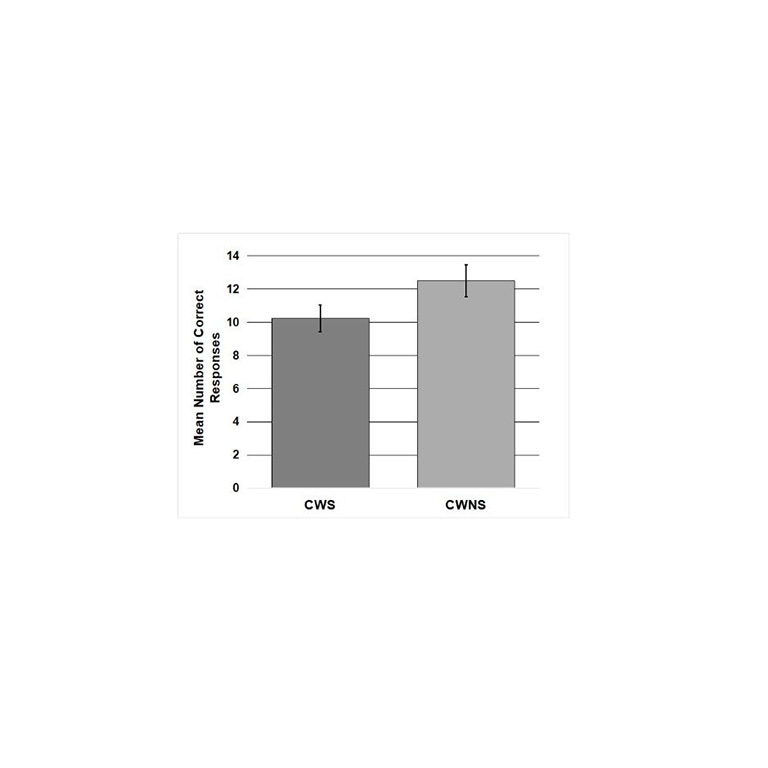We examined complex nonverbal response inhibition and stopping impulsivity in 30 children who stutter (CWS) and 30 children who do not stutter (CWNS) between the ages of 3;1 and 6;0 (years; months). Children performed the Peg-Tapping Task (PTT; Diamond & Taylor, 1996; Luria, 1966), in which they tapped a dowel once when the examiner tapped twice and vice versa. The CWS were less accurate and slower on the PTT than the CWNS. Furthermore, the CWS, especially biological boys, produced more extra taps than the CWNS. Taken together, these findings along with those of previous studies indicate that CWS may have weaknesses in inhibition and impulsivity in the nonverbal domain as well as the verbal domain, suggesting a domain-general weakness.
Complex nonverbal response inhibition and stopping impulsivity in childhood stuttering.
Complex nonverbal response inhibition and stopping impulsivity in childhood stuttering.
- Levi Ofoe, Julie Anderson
- Publication Date
2021 - Website
- Publication information


 The College of Arts
The College of Arts